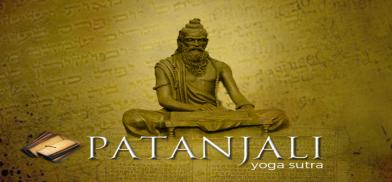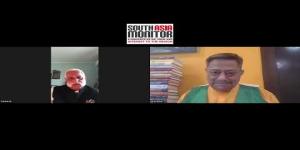The genesis of fear and how to overcome it
In Patanjali Yoga, it is clearly written that once you remove 'sanskars' or psychological knots then true liberation takes place. Thus total removal of fear is liberation.

Fear is the most primordial emotion. Life and fear are interrelated. If there is life it will be afraid because the survival of a living being is very much controlled by fear. It allows the life form to devise strategies and take all the necessary steps to survive and thrive. Thus fear is inbuilt into us.
Why do we want to survive? It is to procreate, keep our forms, and transfer our genes to future generations; all of these are cornerstones of evolution.
Since it is a matter of survival of living forms, evolutionary forces made sure that we are hard-wired for fear. This emotion probably is the earliest and the most important one and hence may use every part of the brain when triggered. Pain is part of fear, and it helps trigger the fear emotion thus both of them occupy the whole brain during the pain episode.
We still do not understand which neural pathways are excited during the fear episode but one can conjecture that almost the whole brain is involved consciously or unconsciously when a being encounters danger.
Hair-raising experience
I had an experience once of this type of fear in the U.S.A. which resulted in the involuntary raising of hair on my neck. It was not by choice or thinking but totally reflexive. In 1987, I was walking in a forested area of northern Minnesota, when I passed a house and out of nowhere three ferocious pit bull terriers and one Doberman came barking at me. I froze at the site of those ferocious dogs and for the first time in my life the hair on my neck stood up.
Those dogs jumped at me while barking frantically and for a moment I thought they will tear me up. However, instinctively I stood my ground and put my hands in the pockets of the heavy jerkin that I was wearing and faced them. They kept on barking and jumping at me. Then slowly I turned and started walking. The dogs kept on jumping at me and barking furiously, but I just continued walking unhurriedly.
After a few minutes (which seemed like an eternity) two of the dogs stopped jumping at me and went away. One of the two remaining dogs kept on barking at me while the fourth one just followed me. By squarely facing them probably I sent a message or a thought signal of not meaning any harm to them which removed their fears and made them not attack me. If I had run their chasing instincts would have been aroused and that would have resulted in a really dangerous situation.
I have often thought about that hair-raising experience and thus this essay is a small attempt in trying to understand fear.
I feel that hair acts as an antenna to broadcast the fear signal. All life forms puff up when confronted with extreme danger. Sociologists call it “becoming big response” but I feel the raised hair sends signals to nearby beings about the danger. We still do not understand the exact mechanism.
Body map
There is a strong possibility that life forms are born with the body maps in their brain. Since survival is the most important thing hence this map of the body is the first memory and the genesis of fear and psychological knots.
As we age other memories are formed when inputs from the environment are received through the senses. But the primary focus is survival and keeping the form intact. These memories in turn lead to all other emotions like jealousy, greed, hoarding, anger, anxiety, etc. and are parts of the fear complex.
For example, we hoard for rainy days; we have greed for resources and other things so that we do not suffer hardship or pain in future and thus these emotions form a part of our survival strategies.
It can also be conjectured that this original memory of form that we have at birth could also have embedded memories from past births and could be the genesis of reincarnation. Patanjali has written that the pain of death is eternal, and the living form remembers it and may inherit it in a new body form.
Reduction of fear
If we can reduce fear – we cannot eliminate it as we may end up losing our form and body - then we can do lots of great things. Fear reduction decreases the psychological knots and makes available the released neural pathways for increasing the processing power of the brain.
In fact, the history of the world is the history of fearless and sometimes foolhardy people. They charted new paths and territories by going ahead without fear. Some failed and perished but those who succeeded created new thoughts, inventions, and discoveries and thus helped in mankind’s evolution. Thus Buddha, Christ, Newton, Darwin, Einstein, and Gandhi, among others were all fearless individuals who discovered the universal truths.
In Patanjali Yoga, it is clearly written that once you remove 'sanskars' or psychological knots then true liberation takes place. Thus total removal of fear is liberation.
Removal of sanskars can be done by cultivating an ability to have deep thought. Thinking deeply about anything gives us the ability to analyze and resolve issues. This is one of the most effective ways to reduce fear and anxiety. But it requires that we are honest with ourselves and are not afraid to look deeply within.
When we do not do deep analysis then the decision-making is influenced by our psychological knots and the actions are impulsive and driven by fear. Such actions are irrational and dangerous and if carried out by people in power they can be lethal. History and the present scenario are full of such people – Hitler, Stalin, Mao and now Putin, Xi Jinping, and North Korean dictator Kim Jong-un, among others, are all examples of rulers who are driven by fear and distrust.
Tomes have been written in ancient philosophical books about the reduction of pain but fear reduction is missing in them. In Patanjali Yoga, he never talks about fear but only about pain. Since pain triggers the fear complex hence it is possible that Patanjali talked about pain only. Probably removal of pain is a partial removal of fear since fear of pain is also one part of the fear complex.
(The writer, an IIT and US-educated Indian engineer, a 2022 Padma Shri award winner, is the Director, of Nimbkar Agricultural Research Institute, Phaltan, Maharashtra. Views are personal. He can be reached at anilrajvanshi@gmail.com)










Post a Comment